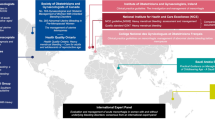Abstract
Objective: To compare serum levels of vascular endothelial growth factor (VEGF), tumor necrosis factor-alpha (TNF-α), and C-reactive protein (CRP) throughout the menstrual cycle in women with and without endometriosis and to quantify the association between these serum markers. Methods: Twenty five endometriosis patients (ASRM stage III–IV) and 13 controls were followed through one menstrual cycle. VEGF, TNF-α and CRP concentrations were measured with enzyme-linked immunosorbent assay in each of the four cycle phases (early and late proliferative and early and late secretory). Non-parametric methods and Pearson’s correlation coefficients were used for statistical analysis. Results: Increased serum levels of VEGF in secretory phases and of TNF-α in all cycle phases were observed. A positive correlation between CRP and VEGF was found in endometriosis patients but not in controls. Conclusions: Our results suggest that excessive systemic angiogenic activity is a feature of patients with endometriosis.

Similar content being viewed by others
References
American Society for Reproductive Medicine (1997) Revised American Society for Reproductive Medicine classification of endometriosis: 1996. Fertil Steril 67:817–821
Audebert A, Backstrom T, Barlow DH, Benagiano G, Brosens I, Buhler K, et’al (1992) Endometriosis 1991: a discussion document. Hum Reprod 7:432–435
Bedaiwy MA, Falcone T, Sharma RK, Goldberg JM, Attaran M, Nelson DR, et’al (2002) Prediction of endometriosis with serum and peritoneal fluid markers: a prospective controlled trial. Hum Reprod 17:426–431
Braun DP, Dmowski WP (1998) Endometriosis: abnormal endometrium and dysfunctional immune response. Curr Opin Obstet Gynecol 10:365–369
Darai E, Detchev R, Hugol D, Quang NT (2003) Serum and cyst fluid levels of interleukin (IL)-6, IL-8 and tumour necrosis factor-alpha in women with endometriomas and benign and malignant cystic ovarian tumours. Hum Reprod 18:1681–1685
Donnez J, Smoes P, Gillerot S, Casanas-Roux F, Nisolle M (1998) Vascular endothelial growth factor (VEGF) in endometriosis. Hum Reprod 13:1686–1690
Duleba AJ (1997) Diagnosis of endometriosis. Obstet Gynecol Clin North Am 24:331–345
Fasciani A, D’Ambrogio G, Bocci G, Luisi S, Artini PG, Genazzani AR (2001) Vascular endothelial growth factor and interleukin-8 in ovarian cystic pathology. Fertil Steril 75:1218–1221
Gagné D, Pagé M, Robitaille G, Hugo P, Gosselin D (2003) Levels of vascular endothelial growth factor (VEGF) in serum of patients with endometriosis. Hum Reprod 18:1674–1680
Harada T, Iwabe T, Terakawa N (2001) Role of cytokines in endometriosis. Fertil Steril 76:1–10
Healy DL, Rogers PA, Hii L, Wingfield M (1998) Angiogenesis: a new theory for endometriosis. Hum Reprod Update 4:736–740
Iwabe T, Harada T, Tsudo T, Nagano Y, Tanikawa M, Terakawa N (2000) Tumor necrosis factor-α promotes proliferation of the endometriotic stromal cells by inducing interleukin-8 gene and protein expression. J Clin Endocrinol Metab 85:824–829
Ladoux A, Frelin C (1993) Hypoxia is a strong inducer of vascular endothelial growth factor mRNA expression in the heart. Biochem Biophys Res Commun 195:1005–1010
Matalliotakis I, Neonaki M, Zolindaki A, Hassan E, Georgoulias V, Koumantakis E (1997) Changes in immunologic variables (TNF-α, sCD8 and sCD4) during danazol treatment in patients with endometriosis. Int J Fertil Womens Med 42:211–214
Matalliotakis IM, Goumenou AG, Koumantakis GE, Neonaki MA, Koumantakis EE,Dionyssopoulou E (2003) Serum concentrations of growth factors in women with and without endometriosis: the action of anti-endometriosis medicines. Int Immunopharmacol 3:81–89
Matarese G, Alviggi C, Sanna V, Howard JK, Lord GM, Carravetta C, et’al (2000) Increased leptin levels in serum and peritoneal fluid of patients with pelvic endoemtriosis. J Clin Endocrinol Metab 85:2483–2487
Missmer SA, Cramer DW (2003) The epidemiology of endometriosis. Obstet Gynecol Clin N Am 30:1–19
Packard CJ, O’Reilly DSJ, Caslake MJ, McMahon AD, Ford I, Cooney J, et’al (2000) Lipoprotein-associated phospholipase A2 as an independent predictor of coronary heart disease. West of Scotland Coronary Prevention Study Group. N Engl J Med 343:1148–1155
Pellicer A, Albert C, Mercader A, Bonilla-Musoles F, Remohi J, Simón C (1998) The follicular and endocrine environment in women with endometriosis: local and systemic cytokine production. Fertil Steril 70:425–431
Seli E, Berkkanoglu M, Arici A (2003) Pathogenesis of endometriosis. Obstet Gynecol Clin N Am 30:41–61
Shifren JL, Tseng JF, Zaloudek CJ, Ryan IP, Meng YG, Ferrara N, et’al (1996) Ovarian steroid regulation of vascular endothelial growth factor in the human endometrium: implications for angiogenesis during the menstrual cycle and in the pathogenesis of endometriosis. J Clin Endocrinol Metab 81:3112–3118
Steff AM, Gagne D, Page M, Rioux A, Hugo P, Gosselin D (2004) Serum concentrations of insulin-like growth factor-1, soluble tumor necrosis factor receptor-1 and angiogenin in endometriosis patients. Am J Reprod Immunol 51:166–173
Vinatier D, Dufour P, Oosterlynck D (1996) Immunological aspects of endometriosis. Hum Reprod Update 2:371–384
Vercellini P, Trespidi L, De Giorgi O, Cortesi I, Parazzini F, Crosignani PG (1996) Endometriosis and pelvic pain: relation to disease stage and localization. Fertil Steril 65:299–304
Author information
Authors and Affiliations
Corresponding author
Rights and permissions
About this article
Cite this article
Xavier, P., Belo, L., Beires, J. et al. Serum levels of VEGF and TNF-α and their association with C-reactive protein in patients with endometriosis. Arch Gynecol Obstet 273, 227–231 (2006). https://doi.org/10.1007/s00404-005-0080-4
Received:
Accepted:
Published:
Issue Date:
DOI: https://doi.org/10.1007/s00404-005-0080-4




